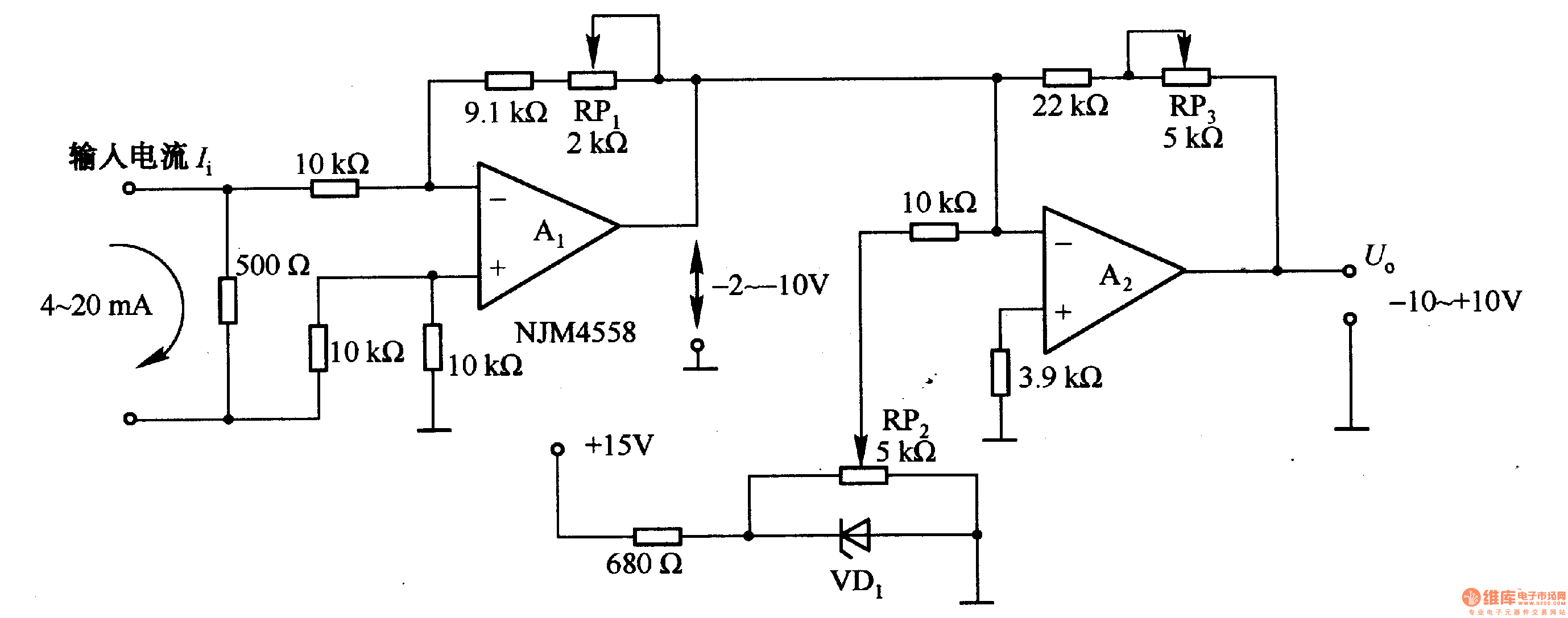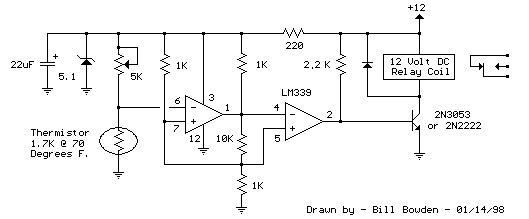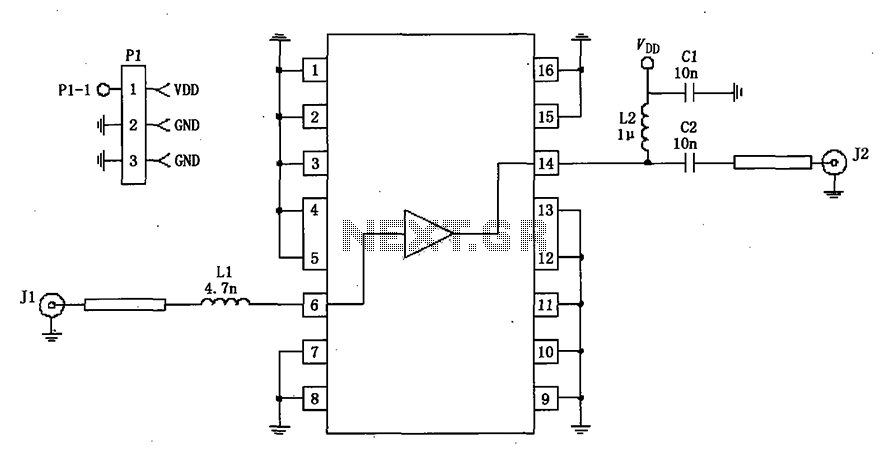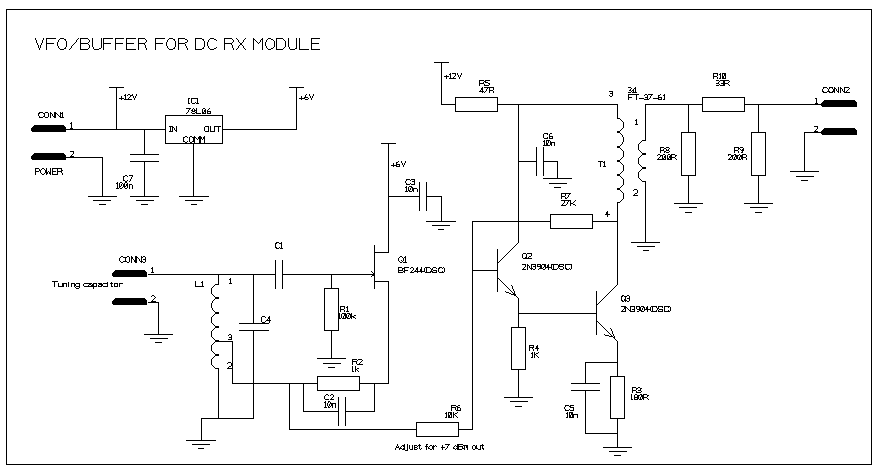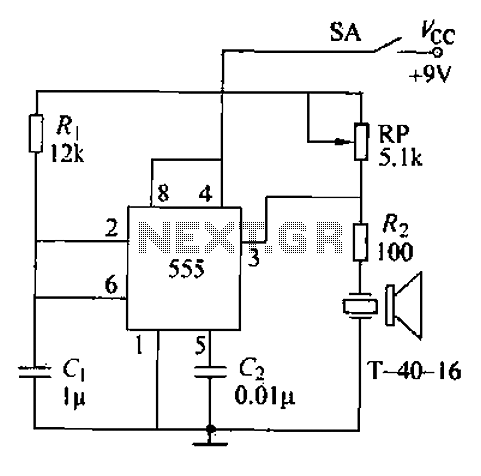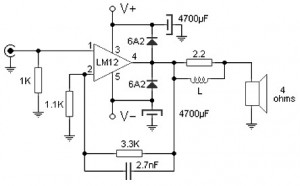
555 Composition with Watchdog circuit
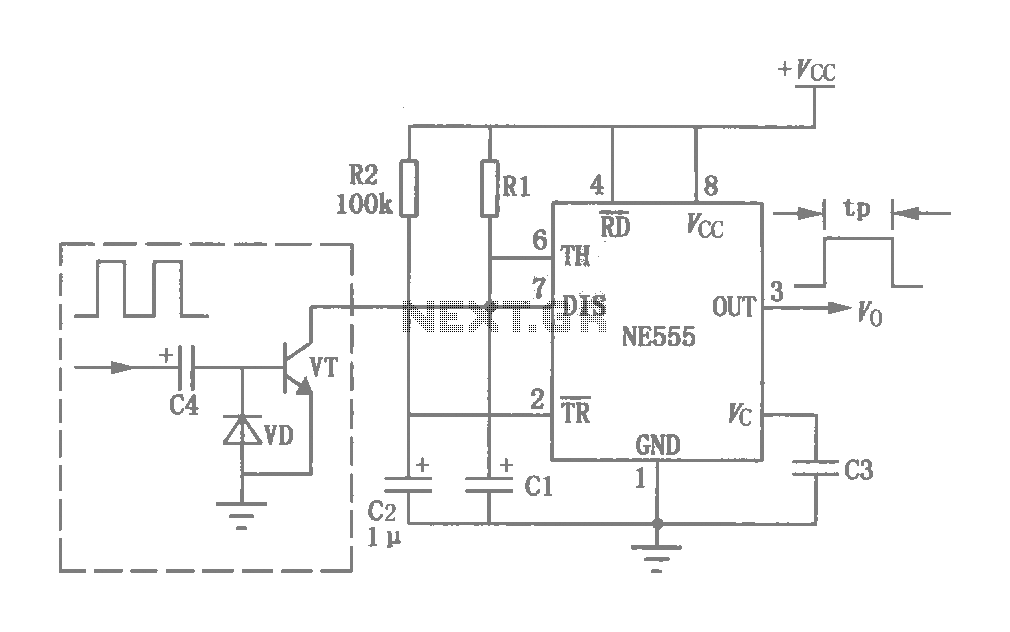
This circuit was originally a type of power-delay control circuit, where the delay time is determined by the timing elements R1 and C1. Additionally, with the inclusion of a "watchdog" circuit, it can be utilized as a monitoring circuit for specific system applications.
The power-delay control circuit operates by utilizing a resistor (R1) and a capacitor (C1) to establish a time constant that governs the delay period. When power is applied, the capacitor charges through the resistor, and the time taken for the capacitor to reach a certain voltage level dictates the delay time. This characteristic can be critical in applications where a delayed response is required, such as in power-up sequences or in systems that need to prevent immediate activation of components after power is applied.
The integration of a watchdog circuit enhances the functionality of the basic power-delay circuit. The watchdog circuit serves as a monitoring mechanism that ensures the system operates within predefined parameters. It can detect anomalies or malfunctions in the system's operation. If the system fails to reset or respond within a specified timeframe, the watchdog can trigger corrective actions, such as resetting the system or activating an alarm. This feature is particularly beneficial in applications where system reliability is paramount, such as in embedded systems, industrial controls, or safety-critical applications.
In a typical schematic, R1 and C1 would be connected in series, forming an RC timing circuit. The output of this timing circuit could be connected to a microcontroller or another control logic device, which would take action based on the voltage level across the capacitor. The watchdog circuit would typically include a timer and a reset mechanism that monitors the operation of the primary circuit. If the timer exceeds its limit without receiving a reset signal from the monitored system, it would initiate a predefined response to ensure safe operation.
Overall, this circuit design combines delay functionality with monitoring capabilities, making it suitable for a variety of applications that require both timing control and system oversight.This circuit was originally a type of power-delay control circuit, the delay time by the timing element Rl, C1 decision. But with the "watchdog" circuit, you can use it as a monitoring circuit for certain applications of the system.
The power-delay control circuit operates by utilizing a resistor (R1) and a capacitor (C1) to establish a time constant that governs the delay period. When power is applied, the capacitor charges through the resistor, and the time taken for the capacitor to reach a certain voltage level dictates the delay time. This characteristic can be critical in applications where a delayed response is required, such as in power-up sequences or in systems that need to prevent immediate activation of components after power is applied.
The integration of a watchdog circuit enhances the functionality of the basic power-delay circuit. The watchdog circuit serves as a monitoring mechanism that ensures the system operates within predefined parameters. It can detect anomalies or malfunctions in the system's operation. If the system fails to reset or respond within a specified timeframe, the watchdog can trigger corrective actions, such as resetting the system or activating an alarm. This feature is particularly beneficial in applications where system reliability is paramount, such as in embedded systems, industrial controls, or safety-critical applications.
In a typical schematic, R1 and C1 would be connected in series, forming an RC timing circuit. The output of this timing circuit could be connected to a microcontroller or another control logic device, which would take action based on the voltage level across the capacitor. The watchdog circuit would typically include a timer and a reset mechanism that monitors the operation of the primary circuit. If the timer exceeds its limit without receiving a reset signal from the monitored system, it would initiate a predefined response to ensure safe operation.
Overall, this circuit design combines delay functionality with monitoring capabilities, making it suitable for a variety of applications that require both timing control and system oversight.This circuit was originally a type of power-delay control circuit, the delay time by the timing element Rl, C1 decision. But with the "watchdog" circuit, you can use it as a monitoring circuit for certain applications of the system.
